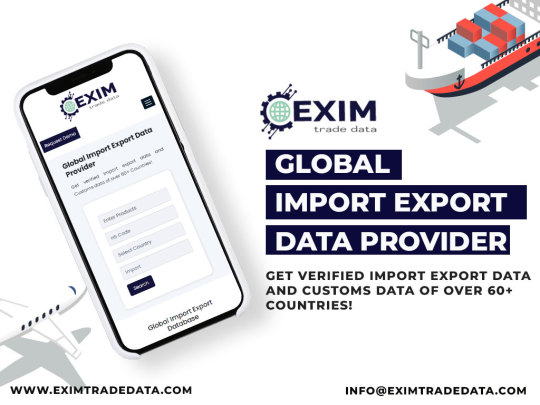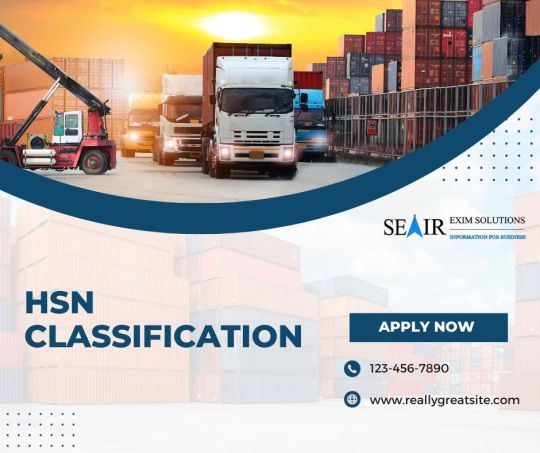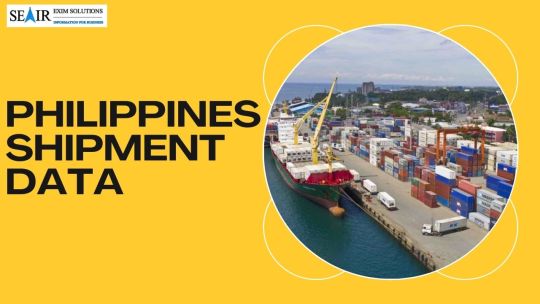#shipment data
Text
The Trade Vision provides relevant and ready-to-use global trade data report. The reports are based on a combination of multiple product name, HS codes or any per-defined parameter to give the most accurate and relevant information.
#Export Import Data Company#Import Export Data#Exporters Importers Details#Custom Data#Shipment Data
0 notes
Text
Global Import-Export Trade Data
Global import-export trade data is a powerful tool that contains crucial and latest insights into the global trade markets and statistics. The data can be used to find buyers & suppliers, and new potential marketplaces in the overseas markets for your import-export trade business.

#global import export data#global import export data provider#exim trade data#import export data provider#global import export database#international import export data#global import export statistics#export import trade data#export import shipment data#export import customs data#import export data#shipment data#customs data
0 notes
Text
[T]he Dutch Republic, like its successor the Kingdom of the Netherlands, [...] throughout the early modern period had an advanced maritime [trading, exports] and (financial) service [banking, insurance] sector. Moreover, Dutch involvement in Atlantic slavery stretched over two and a half centuries. [...] Carefully estimating the scope of all the activities involved in moving, processing and retailing the goods derived from the forced labour performed by the enslaved in the Atlantic world [...] [shows] more clearly in what ways the gains from slavery percolated through the Dutch economy. [...] [This web] connected them [...] to the enslaved in Suriname and other Dutch colonies, as well as in non-Dutch colonies such as Saint Domingue [Haiti], which was one of the main suppliers of slave-produced goods to the Dutch economy until the enslaved revolted in 1791 and brought an end to the trade. [...] A significant part of the eighteenth-century Dutch elite was actively engaged in financing, insuring, organising and enabling the slave system, and drew much wealth from it. [...] [A] staggering 19% (expressed in value) of the Dutch Republic's trade in 1770 consisted of Atlantic slave-produced goods such as sugar, coffee, or indigo [...].
---
One point that deserves considerable emphasis is that [this slave-based Dutch wealth] [...] did not just depend on the increasing output of the Dutch Atlantic slave colonies. By 1770, the Dutch imported over fl.8 million worth of sugar and coffee from French ports. [...] [T]hese [...] routes successfully linked the Dutch trade sector to the massive expansion of slavery in Saint Domingue [the French colony of Haiti], which continued until the early 1790s when the revolution of the enslaved on the French part of that island ended slavery.
Before that time, Dutch sugar mills processed tens of millions of pounds of sugar from the French Caribbean, which were then exported over the Rhine and through the Sound to the German and Eastern European ‘slavery hinterlands’.
---
Coffee and indigo flowed through the Dutch Republic via the same trans-imperial routes, while the Dutch also imported tobacco produced by slaves in the British colonies, [and] gold and tobacco produced [by slaves] in Brazil [...]. The value of all the different components of slave-based trade combined amounted to a sum of fl.57.3 million, more than 23% of all the Dutch trade in 1770. [...] However, trade statistics alone cannot answer the question about the weight of this sector within the economy. [...] 1770 was a peak year for the issuing of new plantation loans [...] [T]he main processing industry that was fully based on slave-produced goods was the Holland-based sugar industry [...]. It has been estimated that in 1770 Amsterdam alone housed 110 refineries, out of a total of 150 refineries in the province of Holland. These processed approximately 50 million pounds of raw sugar per year, employing over 4,000 workers. [...] [I]n the four decades from 1738 to 1779, the slave-based contribution to GDP alone grew by fl.20.5 million, thus contributing almost 40% of all growth generated in the economy of Holland in this period. [...]
---
These [slave-based Dutch commodity] chains ran from [the plantation itself, through maritime trade, through commodity processing sites like sugar refineries, through export of these goods] [...] and from there to European metropoles and hinterlands that in the eighteenth century became mass consumers of slave-produced goods such as sugar and coffee. These chains tied the Dutch economy to slave-based production in Suriname and other Dutch colonies, but also to the plantation complexes of other European powers, most crucially the French in Saint Domingue [Haiti], as the Dutch became major importers and processers of French coffee and sugar that they then redistributed to Northern and Central Europe. [...]
The explosive growth of production on slave plantations in the Dutch Guianas, combined with the international boom in coffee and sugar consumption, ensured that consistently high proportions (19% in 1770) of commodities entering and exiting Dutch harbors were produced on Atlantic slave plantations. [...] The Dutch economy profited from this Atlantic boom both as direct supplier of slave-produced goods [from slave plantations in the Dutch Guianas, from Dutch processing of sugar from slave plantations in French Haiti] and as intermediary [physically exporting sugar and coffee] between the Atlantic slave complexes of other European powers and the Northern and Central European hinterland.
---
Text above by: Pepijn Brandon and Ulbe Bosma. "Slavery and the Dutch economy, 1750-1800". Slavery & Abolition Volume 42, Issue 1. 2021. [Text within brackets added by me for clarity. Bold emphasis and some paragraph breaks/contractions added by me. Presented here for commentary, teaching, criticism purposes.]
#abolition#these authors lead by pointing out there is general lack of discussion on which metrics or data to use to demonstrate#extent of slaverys contribution to dutch metropolitan wealth when compared to extensive research#on how british slavery profits established infrastructure textiles banking and industrialisation at home domestically in england#so that rather than only considering direct blatant dutch slavery in guiana caribbean etc must also look at metropolitan business in europe#in this same issue another similar article looks at specifically dutch exporting of slave based coffee#and the previously unheralded importance of the dutch export businesses to establishing coffee mass consumption in europe#via shipment to germany#which ties the expansion of french haiti slavery to dutch businesses acting as intermediary by popularizing coffee in europe#which invokes the concept mentioned here as slavery hinterlands#and this just atlantic lets not forget dutch wealth from east india company and cinnamon and srilanka etc#and then in following decades the immense dutch wealth and power in java
24 notes
·
View notes
Text
#hs code 7007#import shipment data of kenya#kenya hs code 7007 import data#hs code for export#hs code for import#kenya hs code#shipment#trade#custom#hs code search#exim#harmonized systems code#import
2 notes
·
View notes
Text
Strengthening Foundations:
Navigating Customer Demands and Expectations for Robust Trucking Relationships
Type your email…
Subscribe
The trucking industry stands as a pivotal pillar in the global supply chain, its wheels turning the gears of economy and commerce. Yet, amidst its crucial role, trucking companies face the perpetual challenge of balancing customer demands and expectations with operational efficiency and…

View On WordPress
#"AI trucking industry"#"blockchain in logistics"#"competitive pricing trucking"#"competitive trucking services"#"CRM systems trucking"#"customer relationships trucking"#"customer retention trucking"#"customer satisfaction trucking"#"customer service in trucking"#"data analytics in trucking"#"eco-friendly trucking"#"green trucking solutions"#"IoT devices trucking"#"loyalty programs trucking"#"personalized logistics solutions"#"predictive analytics trucking"#"real-time shipment tracking"#"secure trucking transactions"#"sustainable trucking practices"#"technology in trucking"#"trucking industry customer demands"#"trucking industry innovation"#"trucking industry trends"#"trucking service customization"#"value-added trucking services"#business#cash flow management#Freight#freight industry#Freight Revenue Consultants
0 notes
Link
#HOWIND FURNITURE GMBH firma profili#HOWIND FURNITURE GMBH KONŞİMENTO VERİSİ#BILL OF LADING DATA OF HOWIND FURNITURE GMBH#SHIPMENT RECORDS OF HOWIND FURNITURE GMBH
0 notes
Text
Expand your import-export operations to Paraguay.
Explore Paraguay's potential as a strategic trade hub in South America. Robust economy, diverse exports, and valuable insights for business success.

0 notes
Text
Import Export data provides valuable insight into economic growth and industry performance. Most of this information can be accessed from The Trade Vision, which produces the FT900 report with monthly and annual statistics on international trade in goods and services.
0 notes
Link

The National Master Plan for Multi-modal Connectivity, PM Gati Shakti, was introduced by the Prime Minister and is essentially a digital platform to bring together 16 Ministries, including the Roads and Railways, for connected planning and coordinated implementation of infrastructure connectivity projects.
0 notes
Text

#global import export data#global import export data provider#exim trade data#import export data provider#global import export database#international import export data#global import export statistics#export import trade data#export import shipment data#export import customs data#import export data#customs data#shipment data
0 notes
Text

Seair Exim Solutions simplifies HSN classification with accurate and up-to-date data. Deal with the complexities of product classification and customs with confidence in your international trade. Trust Seair Exim Solutions to streamline your HSN classification needs for seamless global commerce.
0 notes
Text
Philippines Shipment Data
Get updated Philippines Shipment Data based on accurate Philippines import shipping details. We provide import data reports of the Philippines with a 100% money-back guarantee. Before investing in actual import data of the Philippines, you can download a sample report that gives an idea about the import trade business of the Philippines.

0 notes